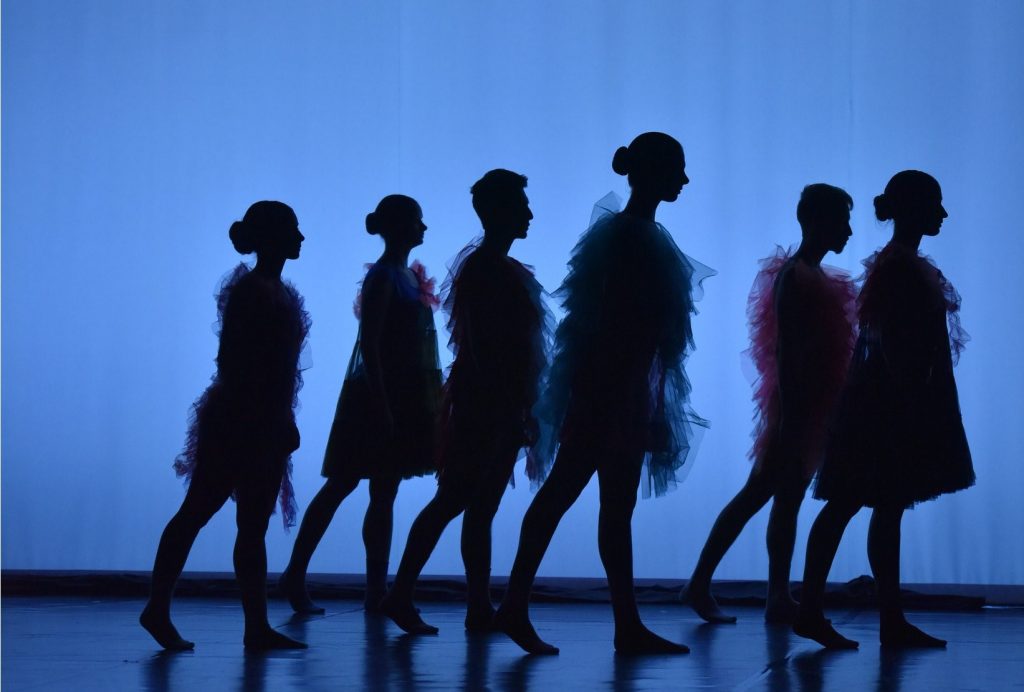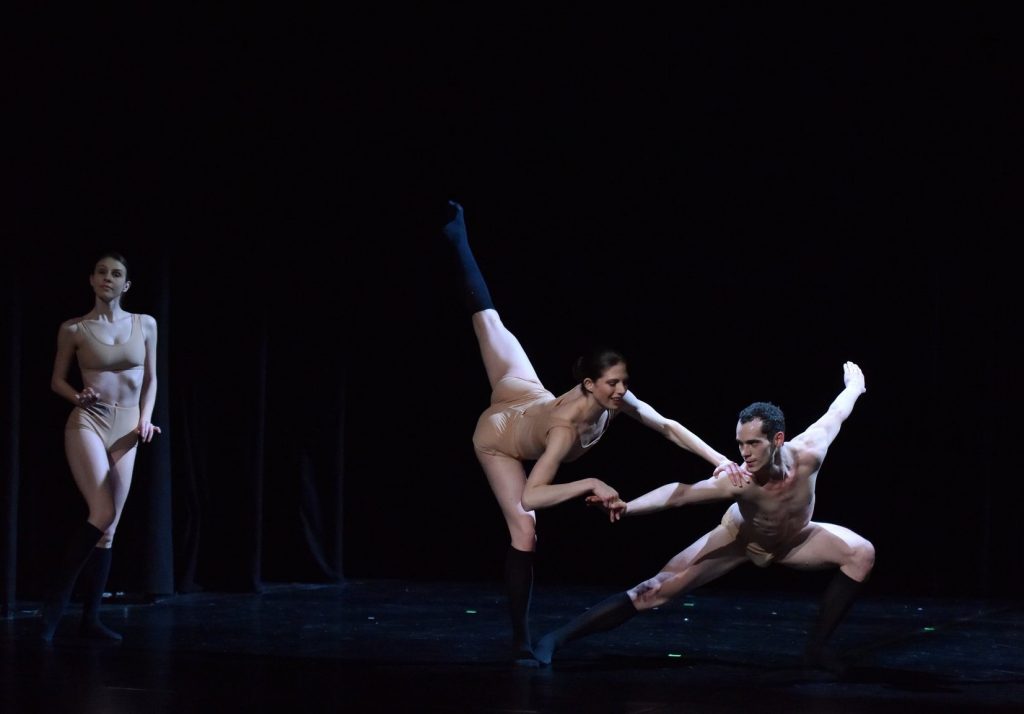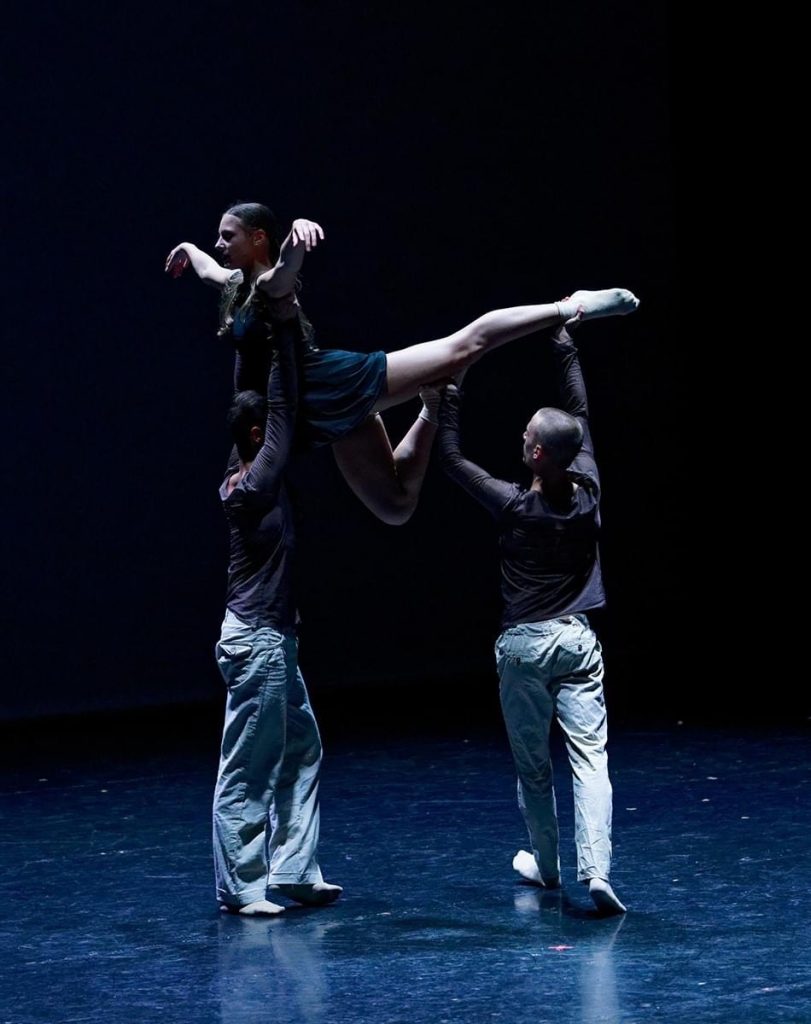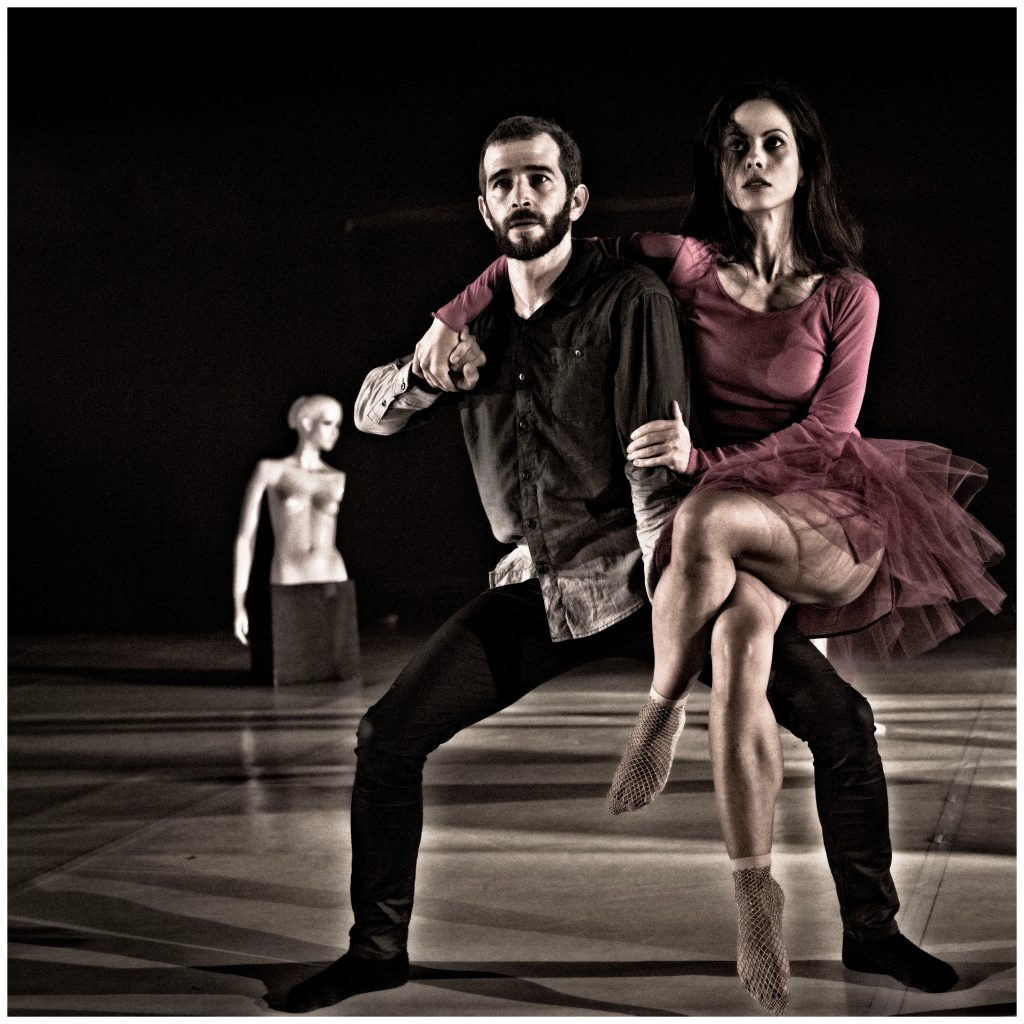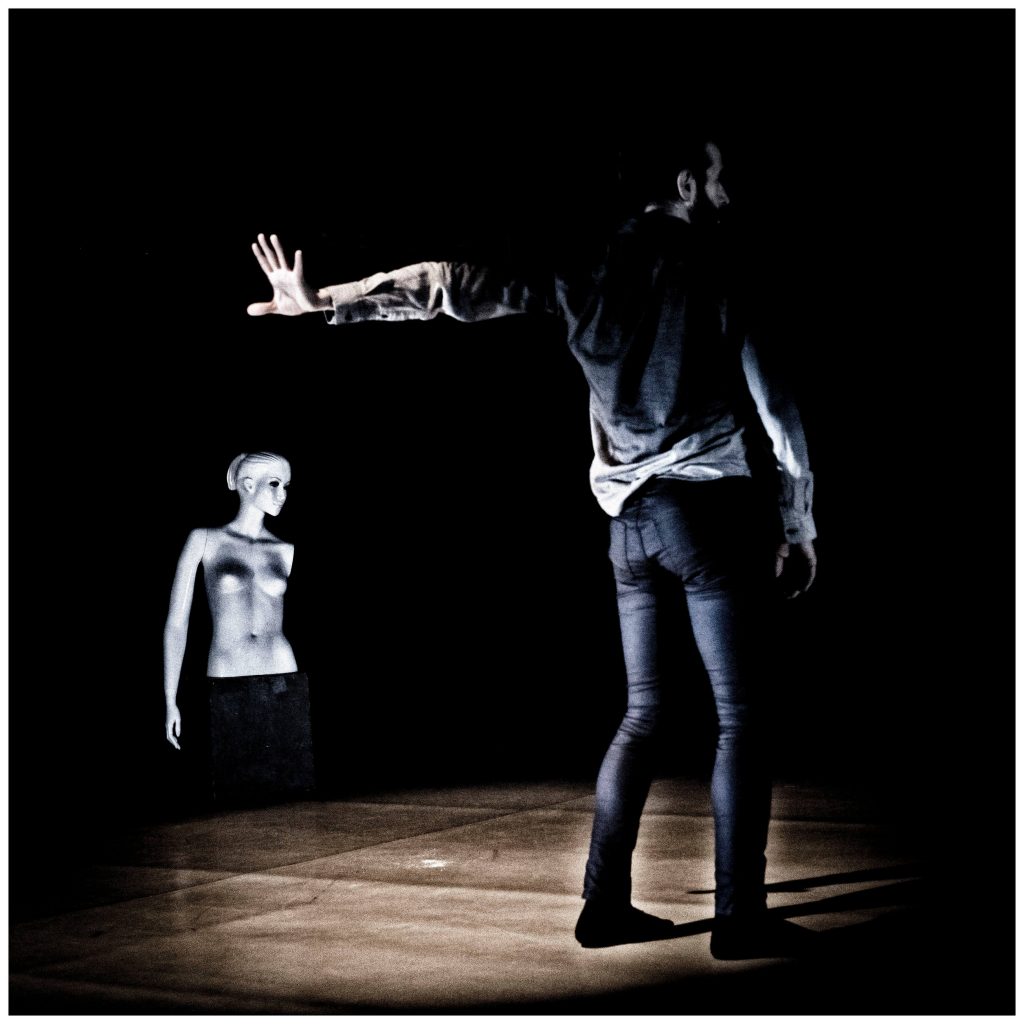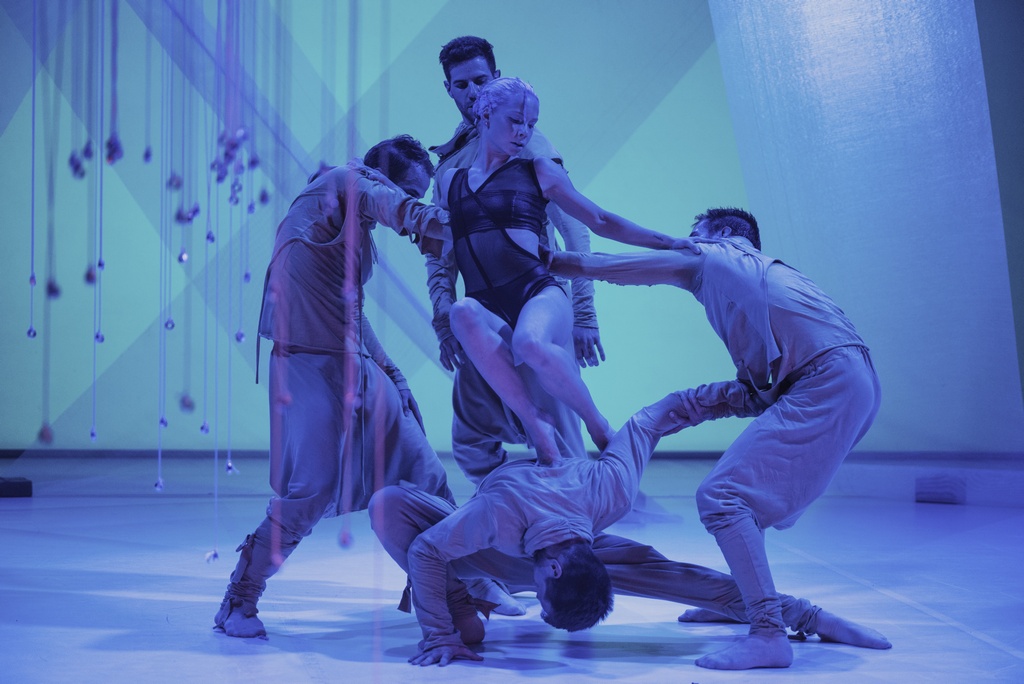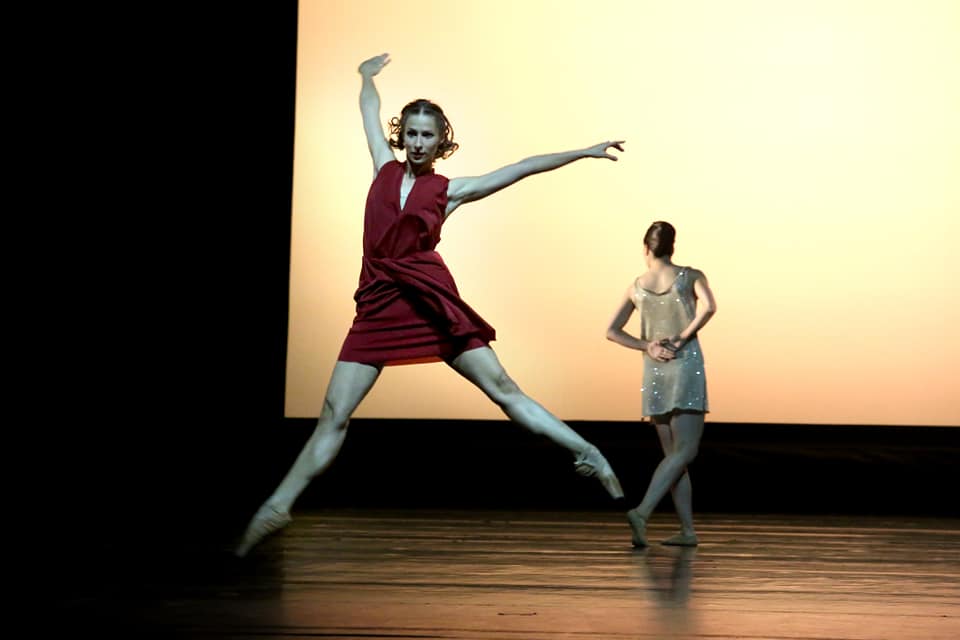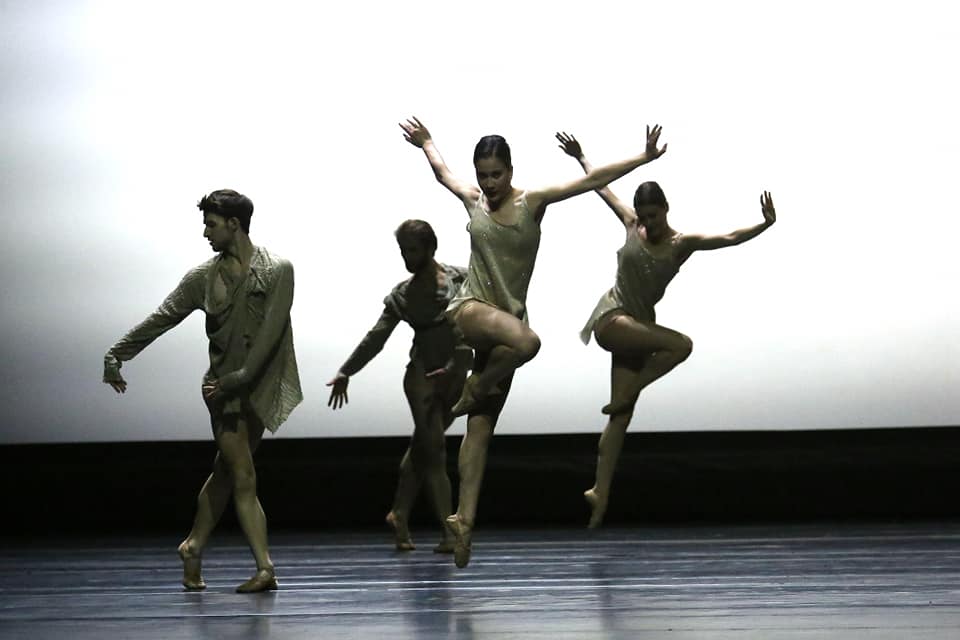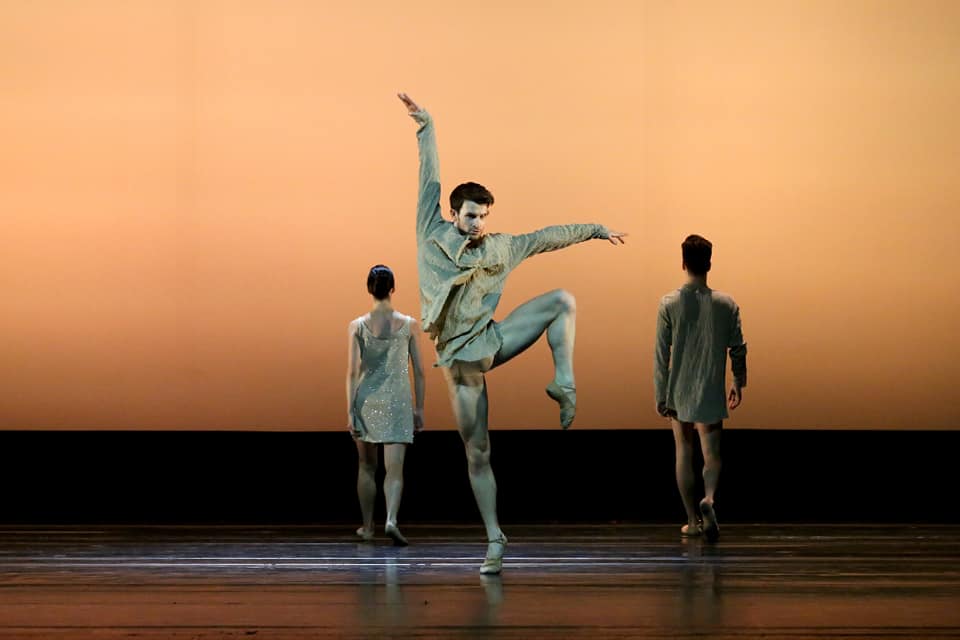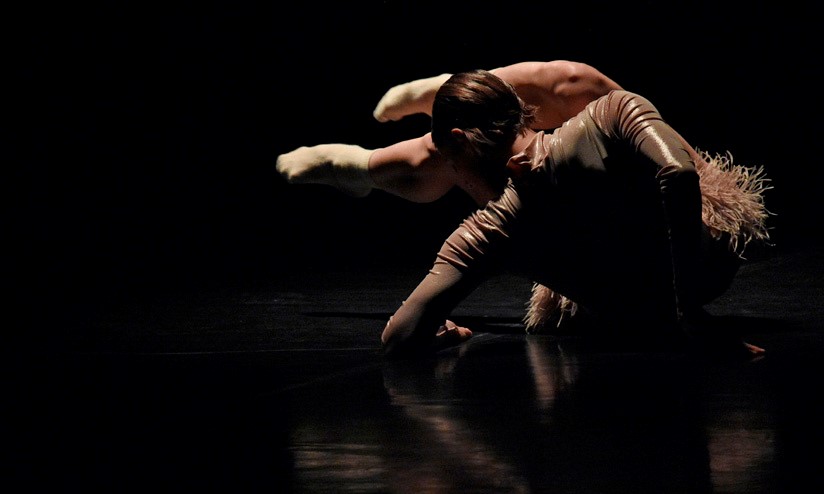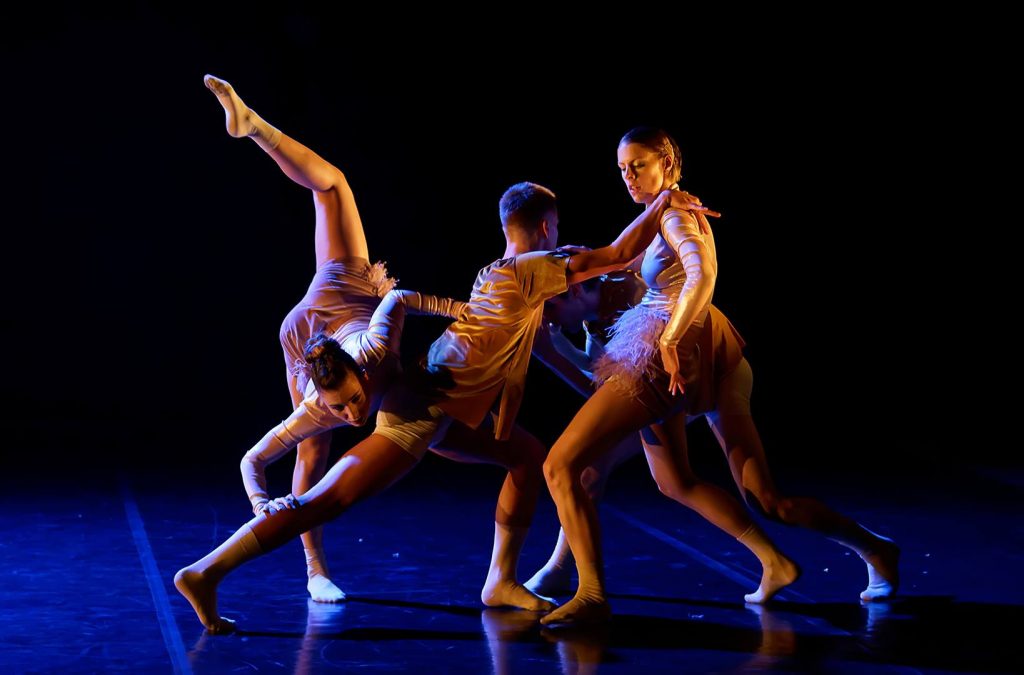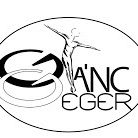
Flora and Fauna – Eger /2020
Imagine a future where a healthy environment we can live in peace with each other, the female-to-male roles are in place. Where the polluting energy of the past, climate change has stopped. Where clean water, clean soil and air around us. Where no consumption is the goal but the community’s own. This alone no one can reach you but together, yes. Head down to the earth’s wildlife and natural features before a flash of motion in the right direction to survive. The piece presented with great success in a triple -bill evening what bounded together by the music of Maurice Ravel. Gábor Halász chose to work with the II. movement of the comopser’s Daphnie and Chloé.



2020 Flora and Fauna – Eger
Imagine a future where a healthy environment we can live in peace with each other, the female-to-male roles are in place. Where the polluting energy of the past, climate change has stopped. Where clean water, clean soil and air around us. Where no consumption is the goal but the community’s own. This alone no one can reach you but together, yes. Head down to the earth’s wildlife and natural features before a flash of motion in the right direction to survive.
The piece presented with great success in a triple -bill evening what bounded together by the music of Maurice Ravel. Gábor Halász chose to work with the II. movement of the comopser’s Daphnie and Chloé.

2019 Bajazet – Budapest
The short trio was created on the students of the Hungarian National Dance Academy. It was premiered first at the International Dance Summer School in Koszencin, then later the professors took it into repertoire of the Hungarian National Dance Academy. Currently the piece is performed on the Academy’s events and guest performances to represent the colorful repertoire of the institution. The electronically modified beautiful aria of Antonio Vivaldi brings us to a dark post-apocalyptic world. The piece is an abstract composition but the fascinating connection between the three dancers creates a unique atmosphere on the stage and lets our imagination to make our own individually story.

2018 Desdemonium – Budapest
Monika Kertész operatic mezzosoprano and Gábor Halász dancer-choreographer, the founders of In-Pact (INterdisciplinary Performing Arts CollecTive), created a unique duo. Two performing artists from different fields find challenges, inspiration and harmony in a common project. They mix opera, classical and electronic music with contemporary dance and movement theater adding a pinch of improvisation. Their performance also includes live harp accompaniment. It is altogether a fascinating result of their experimental project where they aim to create transition between separated performing arts.
Desdemonium is a performance about identity and codependency issues shown through the character of Desdemona from Rossini’s opera, Othello. The creators raise the questions: Is it easier to give up on our identity? Is it worth to fight for it? How do we know we found it and not just living in an illusion created by ourselves? Are we truly following our own values or we do not even realize that we are simply following others?
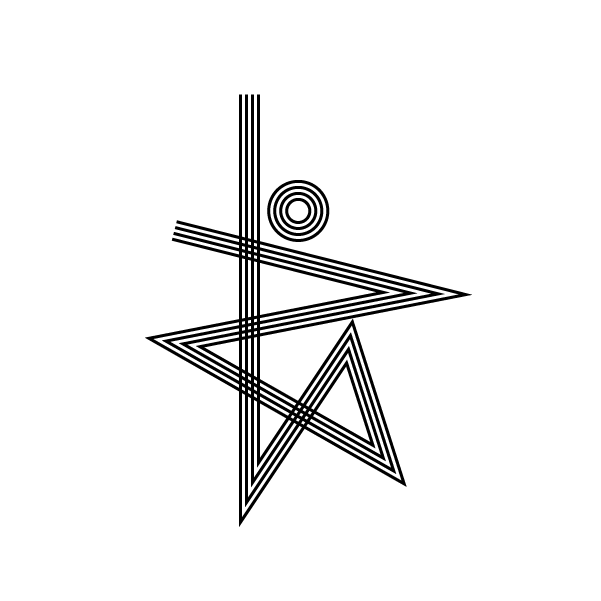
2018 Immortel – Budapest
Our various human cultures are full of mythological and religious stories about gods and their descendants in our world. We find examples among Indian, Egyptian, Greek and Christian stories. Each one is about a chosen woman whose heart and soul are pure enough to give life to a child of a “higher race”. The basic idea of the piece is the “Divine Act”, the moment when an immortal entity impregnate a mortal woman. The moment when the creature falls in love with his own creation.
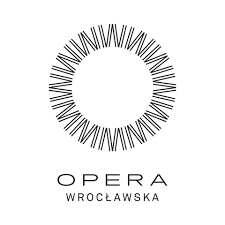
2018 Orawa – Wrocław
In in cooperation with Anna Maria Karabela
Orawa” is a short choreographic form that was created during the “Open Door” program in Wroclaw Opera in cooperation with Semperoper Dresden. Under this program there was international cooperation of selected choreographers from Ballet Wroclaw Opera to the music of Polish composers. One of them was Wojciech Kilar and his piece “Orawa”, the composer himself spoke about it like this: “Orawa, is the only piece in which I would not change any note, it meets in it what I’m striving for ” It has become obvious that this piece will be the main source of inspiration during the creation process. Continues listening to its detailed and comprehensive composition structure, obsessiveness and infinity, allowed us to see the music in space, its energy and sensitivity. This vision was transform into a physical form in the new aesthetics of movement. The main intention was to create a choreography that fully reflects character and dynamics of music on the stage than they became an inseparable whole. Thanks to this exchange of experiences and intertwined qualities “Orawa” brought a huge satisfaction and joy for all who were involved in this project.
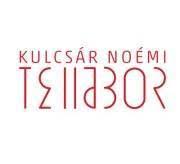
2018 Paranoiac Critical Method – Budapest
The creation focuses on Salvador Dali, Spanish surrealist painter’s work. Who in a peculiar way caught his reality of his era. Besides Einstein’s relativity theory, he also tried to capture many other contemporary discoveries, mindsets and moods in his completely symbolic paintings. How does the human body able to bend the space, how to cheat with the time, and how you can concentrate all era into in a symbolic form? The creators are looking for the answer of these questions when they are re-drafting and developing further Dali’s surreal world in the dance stage.The piece presented with great success in a double-bill evening, what bounded together by the concept.

2016 Arakhné – Budapest
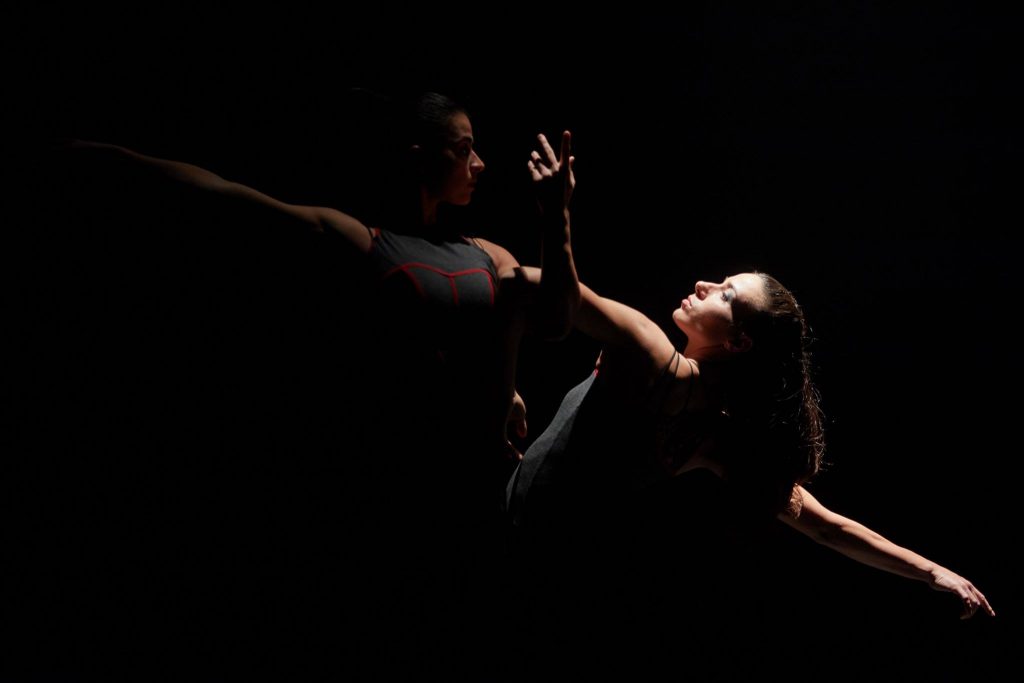
The piece was choreographed to Béla Bartók IVth String Quartet. The whole musical is piece is used with changes in the order of movements. Gábor Halász does not attempt to display the story in a straightforward way, but his arrangement provides an easy-to-follow and flowing theatrical experience based on the relations between the characters. Based on the characters’ attributes, an abstract movement system is developed, the quality of which has stylistic elements resembling dance, while the style is reminiscent of neo-classical pieces.

2016 Metamorphosis – “K-arcok” solo series
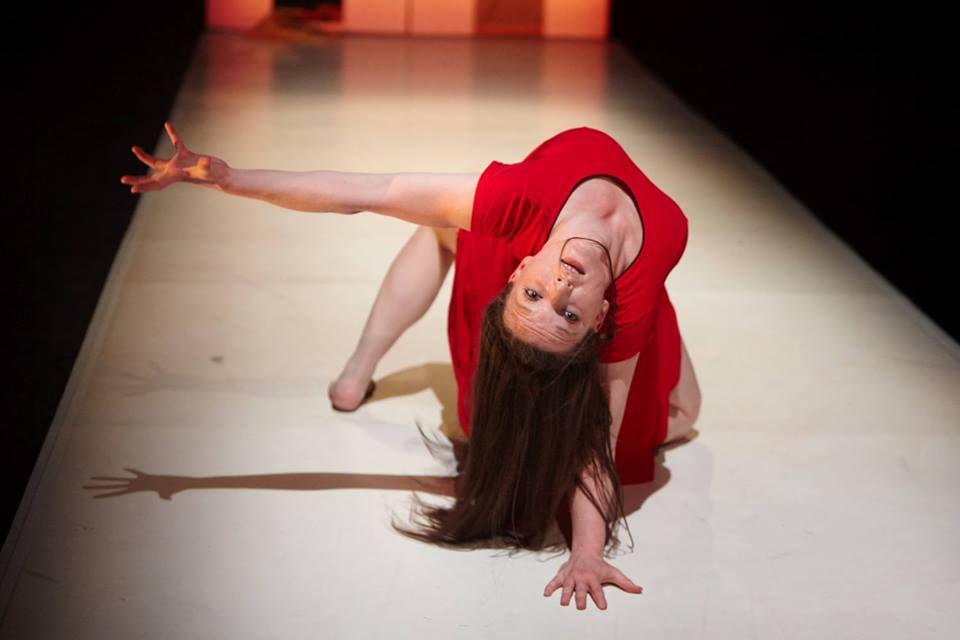
The piece is researching the personality changes of a person who is on the edge of insanity. The solo is based on thriller and horror movies such as Stanley Kubrick’s The Shining or Lars von Trier’s Antichrist. The scene is special, where the different realities of the character appear. The aim of the performance is to catch each transformation through the overlaps of realities.

2016 Le Bon Sauvage – Budapest
"There is a legend – man saying a to a young adventurer who is sitting across the table in a cafe in Paris - Legend is that even today there are primitive peoples who live in isolation they are fighting to stay alive in the wild with absolutely prehistoric tools. They live in tents or even at the open air and set off to hunt fully naked. They drink the rain if they must, they wear bone necklaces, their faces and chests covered with undemanding thick hair. Maybe they even not used to clean themselves (...) so as if they were animals.”
"There is a legend - a father tells the story to he’s child somewhere in the South American rain forest. - My grandfather told me when he was still guarding the trees and the animals of the forest. The legend is about strange, weak people who came to visit us. Traveled in the woods with such a noise, there’s biggest value was a few pieces of metal. There’s whole power was in their hands in a stick kind object. They only could walk really slowly because brought with them all sorts of unnecessary burdens and structures, what weight too heavy. They washed themselves all the times, scraped the hair from their faces. I saw the repugnance on them towards themselves (...) It was as if they wanted to shed off of their's humanity."
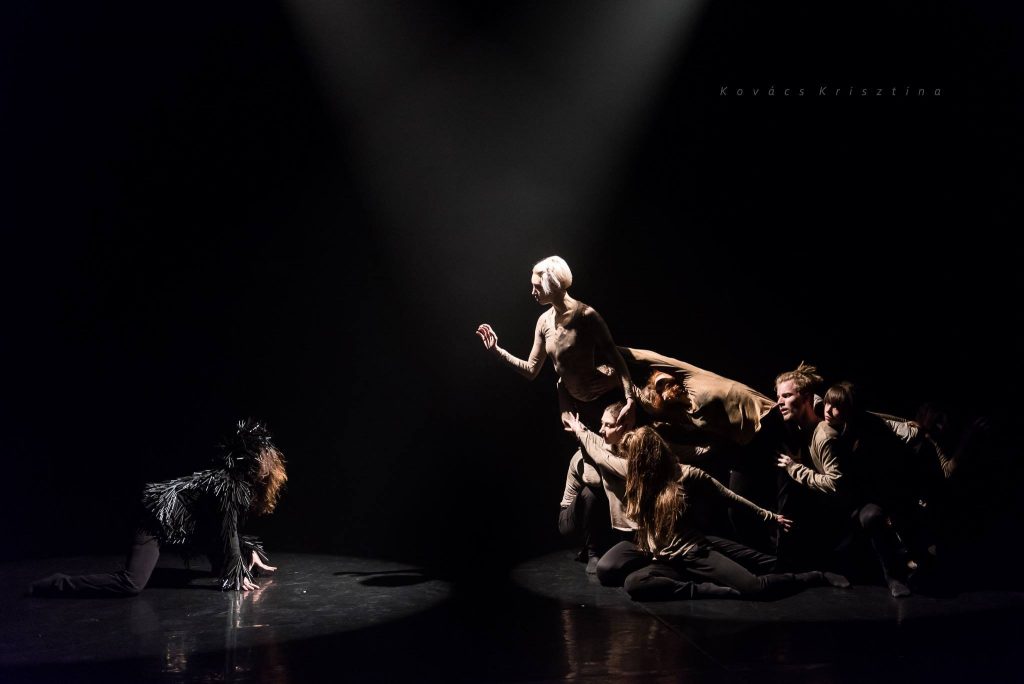
The noble savage (in French: Bon sauvage) is a cross-cultural sentimental idea, romantic view, which is a kind of escape from civilization. It’s searching for pure, isolated people to find happiness again. Trying to find some tribes, untouched by modern society. It was most popular ideology in the 18th-19th centuries, but the impact of philosophy still pop up again time by time. The confrontation of civilizations and problems of modern society continues to feed the search for solutions, what can always make some new followers of this sentimental idea. ”

2015 A8ak / Members of Eight – IKF program
The piece called “Members of 8/ A8ak” feeded by different sources. The eight as main theme coming from the numbers of dancers of the Central Europe Dance Theater but it’s getting more and more complex if we exam the myths of the number eight. The number eight as a symbol: Two circle closing into each other and it symbolize continuity and infinity. It’s shows a figure witch always start he’s way from itself and return to itself. Interestingly the eight always refer to an end of a period and a beginning of a new period at the same time in many approach. The eight in the music: Today, almost all of the music song is written in a musical system, were with the eight sound a new chord starts after the seventh sound and a the scale is repeats itself. The point of infinity it lurks in it where the leaving is one whit the arriving.
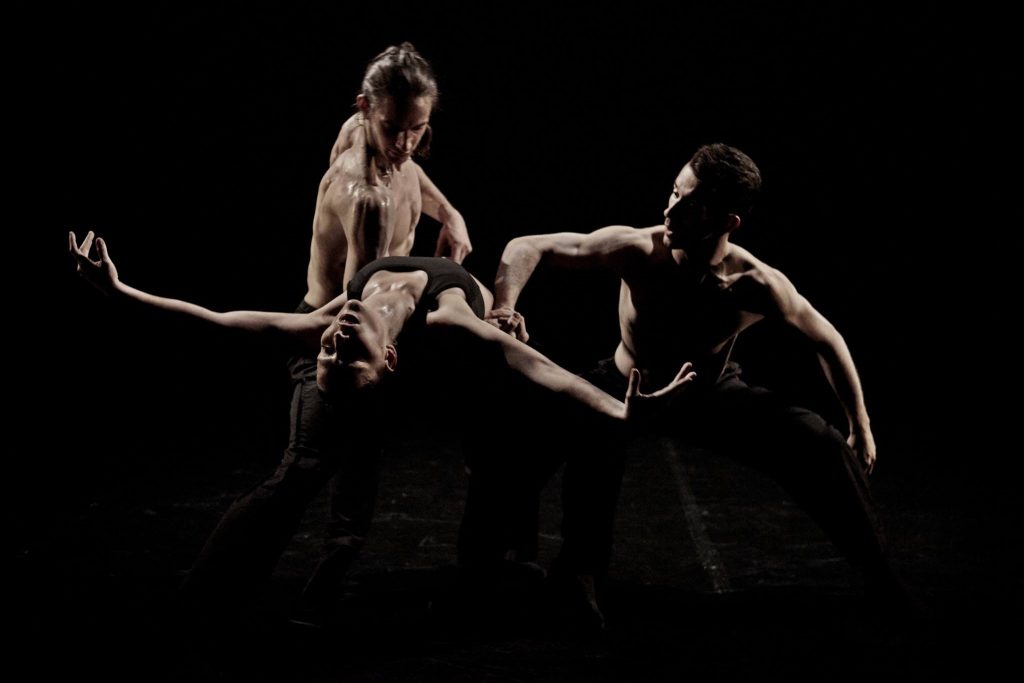
“The Eight” : An other strong inspiration of the piece is the major avantguard group of artists in Hungary, called “The Eight” who where creating at the beginning on the 20th century. Therese main goal was the revolt against the traditional art forms. They tried to resolve the old ones and find new forms of expression. In there’s style the only connection is the revolt, the breakdown of forms and the desire of creating new ways of art. Otherwise there is no really similarity in there’s work. The Eight was the ending point of the old forms of art and they changed them to new ways , witch was more a guidance in there actual society. This source feeds the aesthetically side and message of the piece. Motion, dynamics, urbanization where the keywords of the futurism as an avantguard trend.

[HU]
2015 Memory Warehouse Project – Budapest
Gábor Halász started to work on the idea of the Memory Warehouse back in 2008. Since than he developed a concept of a full evening piece and also composed an original soundtrack from he’s personal records, witch all related to certain events of he’s life. The performance is, working from the relation between space, time and our memories. The choreography is composed of leaded improvisation and fixed movement material. Originally the piece wasn’t played in a traditional theater space, so the audience could walk around and having different perspective of the event. Finally, after many years of planning, the project got presented in 2015. at Budapest.

One of the basic idea of the piece is the theory of space memory. Most of the time when we remember one of the important event of our life we not only recall our personal perspective of the event but most of the time we also remember really well the environment of the event. Many time we remember little details as smells, materials, and the exact place of the event. For example most of us remember our first kiss, or if we had any accident in the past. When we go back to the space where something append whit us, we find back our energies and our memories comes back to our mind without we really putting an effort on it. The theory says, the space also remember us and when we go back to those places we find there our memories. As we living in a society and everybody has a different pass of life we leave different marks on each social places. So we can say : The whole wide world is a memory warehouse.
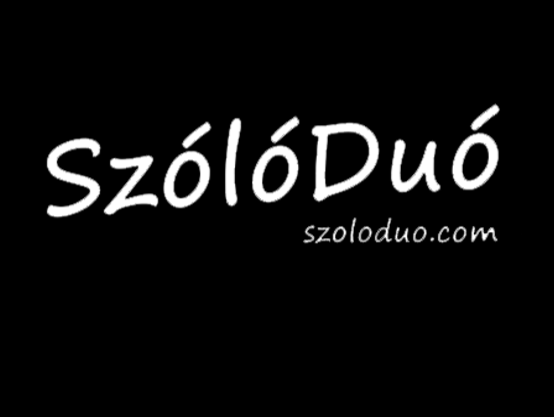
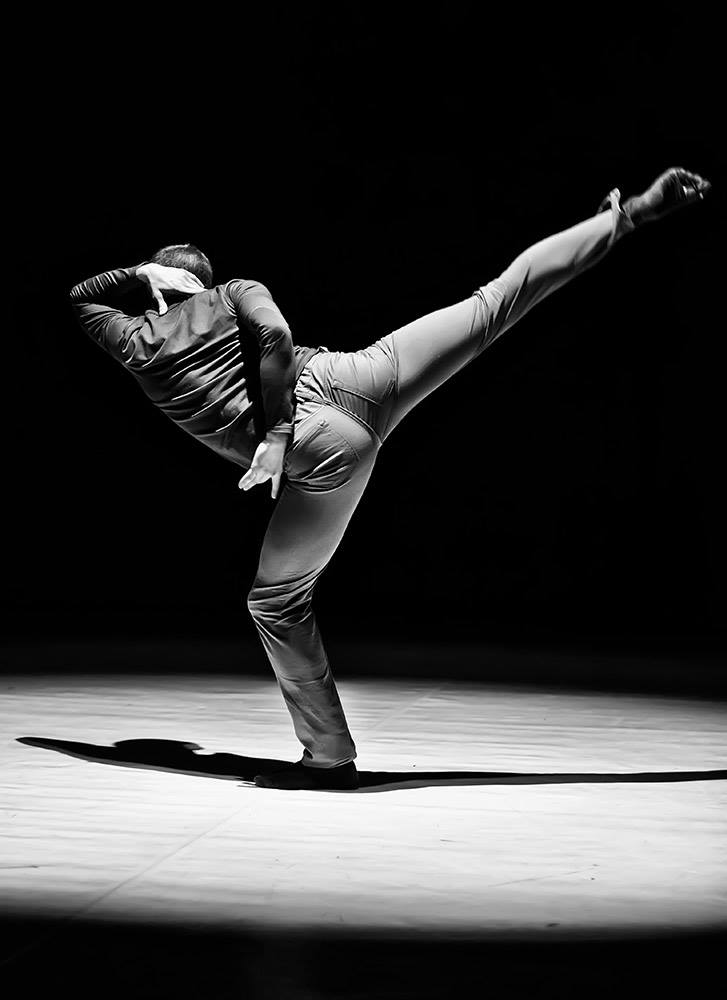
2015 Inside it’s me – Budapest
The solo is a fraction of the new “it’s me inside, outside it’s not me” concept developed by Gábor Halász. The typical “inside” it’s a safe, warm atmosphere, uses a dynamic, controlled, prime language to present one sense of the contrasted sites. The, “Outside is not me” duet it’s a twin brother of the piece, what is also participant of the festival. The two pieces are based on the same movement material and movement language, the difference is in the composition, and the variation of movements according to the theme.

2015 Outside It’s not me – Budapest

The duet choreographed by Gábor Halász is the second element of the concept “Inside it’s me, it’s not outside me”. In contrast to the “inside” here using an aggressive atmosphere, unpredictable sense trying to show concept at bilateral language. The duet twin brother of “Inside it’s me” in participating in the festival. Based on the two pieces of the same material language of movement, the difference into the composition, and the variation of movements according to the theme.

2012 Burn in Flames – Hivernales d’Avignon
Gautama Buddha says in the Fire speech : "Everything is burning. What is burning? The eyes are burning. Everything seen by the eyes is burning."

We always feel the desire to change the world around us so out of desire the ego make an action. All thing what we do is influencing our environment and our environment is reflects back all what we do ether if it’s good thing or not! Day by day, we do millions of lite actions to survive to feel our ego. All actions what we do make the same effect as a drop of water on the surface of a lake. Spelling and spreading. If there are millions of drops only from one ego our daily life looks like a lake in the rain. That makes realize the fact: All actions has to start from peace and has to return to peace. This is the only way to see the effect of our actions to see the reason of the reflection of them to our life.


2010 Back to the Middle – Marseille
“The rule of the world is the moveing, the rule of the middle is the peace. The existence of ours is moveing , activity. Our life is a dance around our own middle point, the one which made possible our existense, how the circule has being bornd from the midle point. Do whatever, go anywere we always search our personal middle, the point of our calmness. Behind every activity there is the wants of the changes. Untill when human beeing is exist on the earth, they still gonna change things, because we always still discontent whit our position. The calmness only possible if we can find our middle point. But were is this point? Nowere, because the point has no position or place. Everywere , because this is the base of any existence. We have to learn to draw our circles, more and more tite, untill moment all our life is start to turning around our own middlepoint.”

2010 That’s how we cry– Marseille
"I am the only power to destroy the good and to eliminate the evil. I am the only power to destroy evil and to eliminate good. "

Making decisions, choosing something or against something requires great spiritual strength. The short solo is about the moments of life when we come to a crossroads. Often, faith alone gives us the strength to work and work with determination and it may not bring us any more pleasure. The moment when we lose our bonds and we have no longer the feeling that we need to keep going. The taste of liberation and loss is mixed in our mouth. This is the moment of life when we have mixed feelings over the ruins of our past and we are looking forward to a new, exciting adventure.
The solo was presented in 2010 at the National Ballet de Marseille – Carte Blanche program with a great success. Fréderich Flamand’s direction takes over the piece in the repertoire of the company and, until 2015. In 2011 this solo was awarded with the Audience Prize at Hivernales d’Avignon.
Photo credit go to: Attila Almay, Csaba Mészáros, Didier Philispart, Gábor Dusa, Imre Kővágó-Nagy, Thierry Hauswald, Krisztina Kovács,
